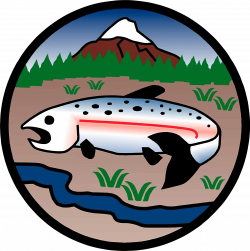Post-Implant Take-Home Surgery Instructions
Day of Surgery
Bleeding
- Some bleeding or “oozing” for the first 24-36 hours is common.
- Keep your head well elevated the first 24 hours.
- Gently bite on gauze for 30 minutes. Wash hands, remove the gauze and replace with new one every 30 minutes for the first 3 hours, or until bleeding has slowed.
- If bleeding is severe, reposition the gauze so it is directly on the surgical site and bite firmly on the area for 30 minutes. As a last resort soak a black tea bag in very hot water, squeeze out water, and wrap in most gauze and bite for 20 minutes. If none of these work, please call our office.
- Do not disturb the surgical area today. No vigorous rinsing, no poking the area, NO SMOKING, spitting, or any other sucking action.
Oral Hygiene
- Do not brush the surgical site/healing cap for 12 hours following surgery.
- After 12 hours, you may carefully brush your teeth with a manual toothbrush (do not use toothpaste until the 3rd day).
- Do not use a Waterpik® or hydrogen peroxide.
Swelling & Bruising
- Swelling and bruising is to be expected and can worsen 7 days out from surgery.
- To minimize swelling, use a cold pack wrapped in a towel and apply firmly to the outside of your cheek near surgical site for 10 minutes with 20 minute breaks in-between for 48 hours.
- Medication will help reduce swelling, (i.e. Ibuprofen).
Pain
- You have just had a major surgery and will experience discomfort afterwards.
- Remedy by taking the prescribed medication well in advance of your anesthetic wearing off.
Medication & Nausea
- Take only the amount prescribed. Laws prevent us from prescribing more pain medication before the first prescription runs out. If a refill is needed, we are required to see you again to evaluate the cause of your continued discomfort. Therefore, prescriptions are only refilled during office hours and will not be replaced if they are lost or stolen.
- Nausea can happen following surgery, usually a side effect of medications and how they are taken. Take pain medication with a small amount of liquid food and lots of water to stop nausea.
CPAP
- If you have been advised by your doctor to use a C-PAP machine, use it during your recovery to prevent respiratory complications with prescribed medications.
Diet
- Make sure to drink plenty of clear liquids during the healing process.
- You must eat each day to heal quicker, gain strength, and ultimately feel better. We recommend high protein liquid foods the first day. If you are a diabetic, maintain your normal eating habits or follow instructions given by your doctor.
- If you are wearing an immediate prosthesis (flipper/retainer) during the healing period, you must remove it while eating as to not apply pressure on the implant.
Physical Activity
- Avoid all physical exertion and exercise the day of surgery. Get plenty of rest.
Day 2 and Beyond
Mouth Rinsing
- Warm salt water rinses can improve healing and comfort.
- Don’t spit. Rather let the liquid dribble out of your mouth into the sink.
Diet
- Eat very soft high protein foods as tolerated. Boiled eggs, milk, ice cream, malts, boiled chicken, soup cheeses, junior foods, etc.
- Avoid hard, sharp, hot, spicy, and acidic foods, (i.e. chips, seeds, nuts, popcorn, etc.). They can irritate the area and cause bleeding. Do not chew on implant.
Swelling
- You may press a warm moist towel to the cheek for 20 minutes at a time. This will also help with any stiffness.
What It Will Look Like
- The gums will gradually close up over the next few weeks.
- The bone however will take 6 months or more to heal.
- Your gums may appear red and possibly white. They will be swollen and bumpy.
Other Tidbits
- Food debris can get into the surgical site and cause irritation and tenderness. Try to retrieve it with gentle rinsing. If you can’t, call our office.
- If sutures were placed, depending on the type they may dissolve and fall out. If non-dissolving was used, we will schedule you a follow up appointment to have them removed.
- If healing abutment becomes loose or comes off, call us to have it replaced.
